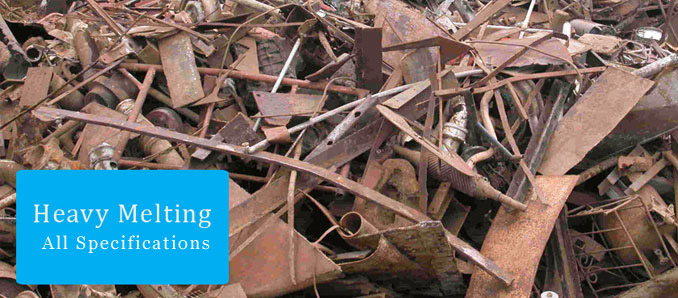
Heavy melting Scrap (HMS) is basically recyclable steel and wrought iron. It is broken up into two major categories: HMS 1 and HMS 2. The difference between the two is HMS 1 does not contain galvanized and blackened steel, whereas HMS 2 does.
The Institute of Scrap Recycling Industries breaks up the categories further:
ISRI 200 (HMS 1): Wrought iron and/or steel scrap 1⁄4 inch and larger in thickness. All pieces must be smaller than 60×24 in.
ISRI 201 (HMS 1): Same as ISRI 200 except pieces must be smaller than 36×18 inches.
ISRI 202 (HMS 1): Same as ISRI 200 except pieces must be smaller than 60×18 inches.
ISRI 203 (HMS 2): Wrought iron and/or steel scrap, black and galvanized, 1⁄8 inch and larger in thickness.
ISRI 204 (HMS 2): Same as ISRI 203 except pieces must be smaller than 36×18 inches.
ISRI 205 (HMS 2): Same as ISRI 204 except it may contain automotive scrap except for thin gauge material.
ISRI 206 (HMS 2): Same as ISRI 205 except pieces must be smaller than 60×18 inches
HMS stands for heavy melting scrap, and 1 & 2 are the two grades within that definition. They are widely traded, particularly in the western hemisphere. Both HMS 1 & 2 comprise obsolete scrap only. That is iron and steel recovered from items demolished or dismantled at the end of their life.
Because both grades guarantee a minimum piece thickness – at least 1/4inch (6.3mm) for HMS 1, and 1/8in for HMS 2 – consignments have a high density. Both also have defined maximum dimensions (usually 60in x 24in), and should be prepared to facilitate handling and charging to a furnace.
This density, sizing and preparation makes for efficient furnace operation by minimizing the time to charge enough scrap for a full melt. In contrast, thin mixed scrap greatly increases charging time, cutting furnace productivity.
Variations on maximum piece size are covered by ISRI (North America’s Institute of Scrap Recycling Industries) codes. HMS is usually traded as a blend of 1 & 2, either a premium blend (80:20) or lower grade mixes (70:30) and (60:40). Other major heavy scrap grades include Japan’s H2 and A3 from the CIS.